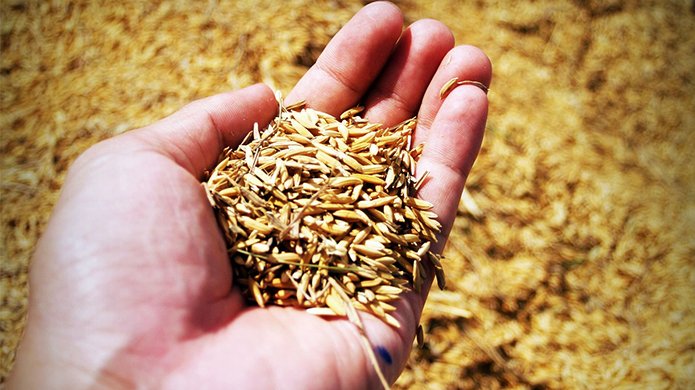The 39th edition of the Mycotoxin Workshop will be held this year in Bydgoszcz, Poland, from 19-21st June. Olmix, who’s expertise in the mycotoxin risk management has been recognized worldwide, will be involved in the event by presenting two technical posters. This time, Mr Piotr Cierpinski, Olmix's Technical Service Regional Manager, will be the contact person to discuss about the 2 presented studies:
Efficacy of an algo-clay complex on decreasing mycotoxin liver toxicity on broilers (María Ángeles Rodriguez, Julia Laurain, María García Suárez, Piotr Cierpinski)
The aim of this study was to measure the efficacy of an algo-clay complex (ACC) on T-2/HT-2 toxin (2ppm), fumonisin (100ppm) and aflatoxin (2.8ppm) individual toxicity on the liver. The study was conducted by Samitec Institute in Brazil. Nine hundred broiler chickens (Cobb 500) were allocated to 11 treatments with 6 (test) or 12 (control) replicates and 10 animals in each group, from day 1 to day 21. Treatments differed by the contamination in mycotoxin and the inclusion of the algo-clay complex (0.25 or 0.50%). The inclusion of 0.50% of algo-clay complex in the diets containing mycotoxins always significantly improved the birds feed consumption and body weight compared with those fed with mycotoxins only (P≤0.05).
In each treatment with ACC, the relative weight of the liver (RWL) of the animals that were supplemented with 0.50% of the algo-clay complex, was significantly improved and closer to the control value compared with those exposed to mycotoxins only. The inclusion of 0.50% of algo-clay complex in the diets containing 2.8 ppm of aflatoxin significantly improved the Lamic/Samitec Index compared with those from the birds fed with aflatoxin only (P≤0.05). The inclusion of 0.25% and 0.50% of algo-clay complex in the diets containing 100 ppm of fumonisin diminished significantly the Sa/So compared with those from the birds exposed to fumonisin only (P≤0.05). The inclusion of 0.25% and 0.50% of algo-clay complex in the diets containing aflatoxin and fumonisin significantly improved the level of total plasma proteins (P≤0.05), also indicating a reduction in liver damage thanks to the algo-clay complex.
According to the evaluated parameters, the algo-clay complex significantly decreased (P≤0.05) the deleterious hepatic effects and performance losses caused by very high levels of three types of mycotoxins on broilers.

Occurrence of field and storage mycotoxins in Poland from years 2013-2016 (Julia Laurain, Eric Marengue, Piotr Cierpinski)
Mycotoxins are secondary metabolites of various fungi commonly found in feed and foodstuffs. Based on their common occurrence and known and suspected effects on human and animal health, aflatoxins (AF), fumonisins (FB), deoxynivalenol (DON), ochratoxin A (OTA) and zearalenone (ZEA) are recognized as the five most important agricultural mycotoxins. Recent surveys have demonstrated the regular occurrence of low levels of multiple mycotoxins in cereals (Binder, Tan, Chin et al, 2007; Schothorst and van Egmond, 2004). Worldwide surveys on the occurrence and contamination levels of mycotoxins in raw materials also indicate that DON and FB are the most frequently detected mycotoxins.
This study uses the Labocea database composed of chromatography analysis results run with LC MS/MS from 2013 to 2016 (civil year). 44 mycotoxins are analysed for each sample. The range of polycontamination and percentage of positive samples (> LOQ) per mycotoxin are the two main criteria used. To avoid any geographical interaction, samples from one restricted area only (Poland) are considered: 93 samples.

In samples collected in Poland only 2,0 % of samples were not contaminated and 41 % were contaminated with 6 -10 mycotoxins. In these samples, we have DON as the most frequent field mycotoxin with 90,3 % positive samples and Tenuazonic Acid as most frequent storage mycotoxin with 54,8 % positive samples.
The toxic effects of mycotoxins in animals include reduced growth, feed refusal, immunosuppression, gastrointestinal lesions, and neurological and reproductive disorders (Oswald and Comera, 1998). The toxicity of combinations of mycotoxins cannot always be predicted based upon their individual toxicities (Smith et al, 1007; Oswald et al, 2011). Interactions between concomitantly occurring mycotoxins can be antagonistic, additive or synergistic. Data on the combined toxic effects of mycotoxins are limited and, therefore, the actual health risk from exposure to mycotoxins is unknown (Oswald et al, 2011).
Please consult local regulations for the status of these products. All information concerns exports outside Europe, the United States and Canada.




